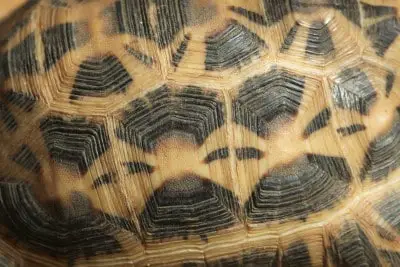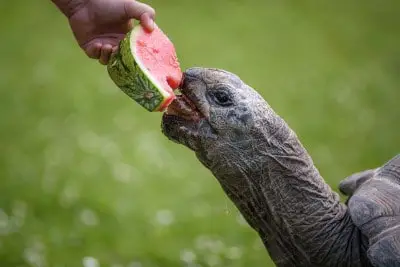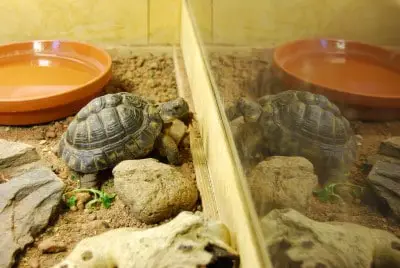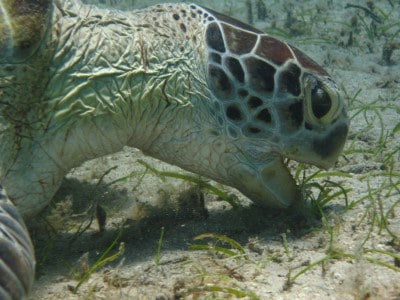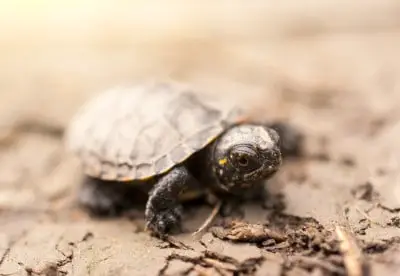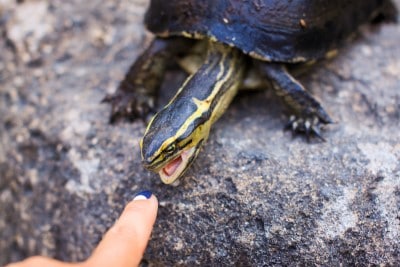If you have a pet tortoise or turtle, you probably mimic their diet in the wild to ensure they remain healthy. However, it may be challenging if you do not know what nutrients it requires. Therefore, you need to know which nutrients are important for your turtle and tortoise to give them a balanced meal
Turtles and tortoises need calcium to stay healthy. Their shells and bones demand more calcium than most animals. In captivity, these pets are more likely to suffer from calcium deficiency than in the wild due to their limited food sources.
If you want to know whether turtles and tortoises need calcium, this is the guide for you. We will help you know how you can provide calcium for your turtle and tortoise in captivity and the signs of calcium deficiency. Read through the rest of the sections to find out all the answers you need.

How Do I Provide Calcium for My Tortoise in Captivity?
Juvenile and adult tortoises have varying levels of calcium requirements, with the younger ones requiring more calcium. The young tortoises require calcium to grow a healthy skeleton and shell, while the older ones need it for maintenance.
In captivity, you can provide calcium for your tortoise by feeding it calcium-rich foods and supplements (buy on amazon). These include breaking cuttlebone, sold in pet stores, and foods such as dandelions and milk thistle. If the area you live in has chalky soil, you may notice your pet occasionally swallowing some pieces of the chalks, an instinct they use to meet their calcium requirements in the wild. You can also sprinkle calcium supplements on your tortoise’s food.
If you opt to provide calcium supplements to your tortoise, you should identify the best supplement and provide it with moderation. Calcium carbonate is the top recommendation for calcium supplements in tortoises. This is because it is affordable, especially if you purchase it in bulk. Also, calcium carbonate is safe to use with tortoises and bears no hazards such as choking. To use it, grind it into powder form and dust your pet’s food lightly with it. Putting too much of this supplement into your pet’s food may discourage it from eating, given its bitter taste.
In addition to diet, you should ensure that you should expose your pet to the correct UV lighting for calcium metabolism, especially if your tortoise stays indoors. To do this, you can purchase a suitable UV reptile light and suspend it over your tortoise’s housing at the right temperature and height. The UV source will require replacement after about 12 months, depending on the manufacturer. This is because although the light will still be functional, it will not emit beneficial UV output for your pet by this time. The tortoises that roam outdoors will get enough sunlight for calcium metabolism and do not need UV lighting.
In captivity, it is challenging for pet tortoises to gain access to enough calcium, given that only a few owners can afford an endless supply of foods such as snails rich in calcium. Also, most owners are unaware of their pet’s calcium needs and feed them fruits and vegetables until the deficiency symptoms manifest. This is unlike in the wild, where calcium is freely and readily available.
Therefore, a wild tortoise does not need supplements. Instead, they meet their calcium requirements by feeding on vegetation rich in this mineral. Most tortoise habitats in the wild also have calcium-rich soil. Once in a while, you may even spot a wild tortoise eating the soil while feeding. Also, if their body signals a calcium shortage, they will feed on snail shells, bones, and other major calcium sources.
Generally, a younger tortoise requires more calcium than an adult. This is the same case for their food requirements since they are growing. To effectively meet your juvenile tortoise calcium needs, sprinkle calcium carbonate on its food at least twice or thrice a week. You should sprinkle this powder in small amounts due to its bitter taste, as your pet will stop eating the food if it finds it too bitter. This way, it will not overfeed on the calcium supplement. You should also supply gravid females with a higher dose of calcium to ensure the formation of strong eggshells.
While supplying calcium to your pet, you need not worry about an excess of this mineral. There is no research yet indicating the toxicity of this mineral in excessive amounts. On the contrary, very low calcium levels are dangerous to your tortoise and may cause kidney stones.
How Do I Provide Calcium To My Turtle?
In captivity, feeding your turtle on snacks such as shrimp, vegetables, and proteins will meet most of its dietary requirements. However, your pet may still lack calcium resulting in serious health complications.
To meet your turtle’s calcium requirements, you should provide calcium blocks, calcium-rich foods, and supplements (buy on amazon). Foods such as kales and fish are rich sources of calcium. You should supply your pet with leafy green vegetables and kales daily to get the most calcium. Feeding your pet on fish species such as killifish and guppies will also meet its calcium demands. These fish, especially the ones raised in outdoor ponds, are rich in calcium, given that they can access a wide variety of insects for food.
Providing a phosphorus-free calcium supplement to your turtle is another way of meeting its calcium needs. This supplement is usually in powder form, and you can sprinkle it into your pet’s food. However, if you have an aquatic turtle, sprinkling the supplement on its food in the feeding tank will not help as it will dissolve in the water. Instead, you can put your pet’s food in a plastic bag and moisten it, then add a few scoops of the calcium, shake the mixture, let it dry and then feed it to your pet. This way, the calcium will stick to the food long enough to allow your pet time to consume it. To ensure your pet gets enough calcium, you should provide this supplement at least once a week.
Cuttlebones are another alternative source of calcium for turtles. To feed your pet on this calcium source, break it into small pieces to prevent choking and drop a few pieces in your pet’s tank for it to nibble. Cuttlebones are ideal sources of calcium for a turtle as they are long-lasting, allowing your pet to nibble them when they want. However, some turtles are picky and may avoid this calcium source. The cuttlebones may then dissolve in the tank and make the water cloudy. Thus, before settling for this source, you should test first with your pet to see whether it likes it. Alternatively, you can dissolve calcium blocks and tablets on your pet’s tank and let it absorb them through its skin and shell.
If you are providing enough calcium to your turtle but still observe deficiency symptoms, it could be due to non-exposure to UV-B rays. You should therefore get a UV-B bulb or allow your pet to bask. Also, avoid giving your pet too much phosphorus than calcium as this will inhibit calcium metabolism resulting in a deficiency.
What Are the Signs of Calcium Deficiency in Turtles and Tortoises?
Contrary to popular belief, turtles and tortoises will not meet their calcium requirements through their diet only while in captivity. This is because it is challenging to tell how much calcium your pet needs. Therefore, you can prevent deficiency through regular calcium supplementation for your pet.
Failure to provide enough calcium will cause metabolic bone disease. This disease is characterized by a lack of appetite, poor walking or swimming posture, softshell, and swollen lumps on the head. Calcium helps in the contraction of muscles. Therefore, a deficiency will cause your pet’s digestive process to slow down, reducing its appetite. The result will be significant weight loss which could be fatal if not treated.
Lack of calcium or low calcium supply in juvenile turtles and tortoises will cause poor shell development in terms of shape and texture. In gravid turtles and tortoises, lack of calcium will cause egg binding such that they will be unable to lay their eggs.
Wrap Up
Turtles and tortoises need calcium to remain healthy. In the wild, these creatures can meet their calcium needs easily, given the variety of food supplies. Also, most live in areas with calcium-rich soils, further meeting their calcium needs. Despite efforts to provide your turtle or tortoise with a balanced diet in captivity, you may still be unable to meet its calcium requirements. To achieve this, you can rely on calcium supplements and sprinkle them on your pet’s food.
Finally, while it is difficult to tell your turtle or tortoise’s calcium requirements, you should ensure a constant supply of this essential nutrient. Low calcium levels will cause metabolic bone disease, which could be fatal. Thus, to be safe, provide calcium to your pet once or twice a week, depending on its age.

